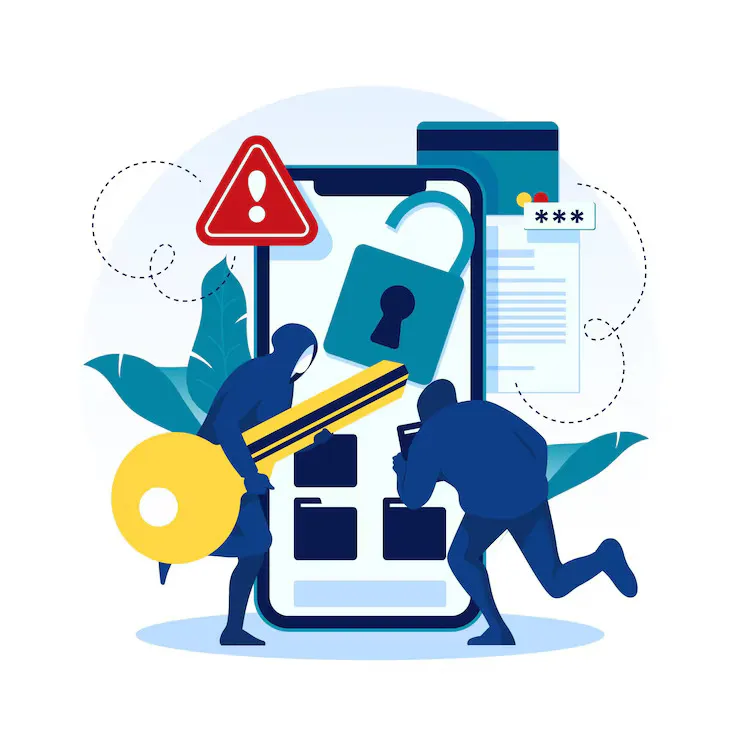Articles
Protecting Sensitive Data in the Digital Age
Overview
As technology continues to transform education, protecting sensitive data from cyber threats has become a paramount concern for educational institutions. With the increased reliance on digital platforms for teaching, learning, and administration, cybersecurity in education is more critical than ever. This blog explores the current state of cybersecurity in the education sector, the challenges institutions face, and the strategies they can implement to safeguard sensitive information.
- In this Article you will read:
- The Growing Threat Landscape in Education
- Key Challenges
- Strategies for Enhancing Cybersecurity in Education
- Conclusion
- Sources
The Growing Threat Landscape in Education
Educational institutions hold a wealth of sensitive data, including personal student information, financial records, grades, and administrative data. This makes them attractive targets for cybercriminals seeking to exploit data for identity theft, financial fraud, and other malicious activities. According to the 2023 Internet Crime Report by the FBI, educational institutions experienced a significant increase in cyberattacks, including phishing, ransomware, and data breaches. Between 2020 and 2023, educational institutions reported over 1,500 cybersecurity incidents, highlighting the vulnerability of the sector.
-
Published By:
#taskone Consulting Group
-
INDIA
HIGHWAY TOWERS, 1 A 13/2, Block A, Industrial Area, Sector 62, Noida
-
Industry
Corporate
-
Author
Ashu Tosh Bhardwaj
-
Resources
Protecting Sensitive Data in the Digital Age
-
Date
13 Dec 2024
- View Author's Profile
Key Challenges Faced by Educational Institutions

Limited Resources and Budget Constraints
Many educational institutions struggle with limited budgets, which can hinder their ability to invest in robust cybersecurity measures. A report by the Center for Educational Leadership indicates that 40% of colleges and universities do not have a dedicated cybersecurity officer, and 55% do not have a formal cybersecurity strategy in place.
Lack of Awareness and Training
A significant challenge is the lack of cybersecurity awareness among staff and students. Many educational institutions fail to provide adequate training on safe digital practices, leaving individuals vulnerable to phishing attacks and other threats. According to Verizon’s 2023 Data Breach Investigations Report, 82% of breaches involved a human element, such as poor password management or falling for phishing scams.


Outdated Infrastructure
Many schools still rely on outdated technology that lacks the necessary security features. These legacy systems are particularly susceptible to breaches and are costly to update or replace. According to a study by the International Association for Privacy Professionals, 60% of institutions have not completed a full system upgrade within the past three years.
Third-Party Vendors
Educational institutions often contract third-party vendors for various services, such as cloud storage, learning management systems, and administrative software. These vendors can introduce security risks if not properly vetted and monitored. The Education Sector Cybersecurity Agency (ESCA) emphasizes the importance of due diligence when selecting third-party providers to ensure they meet security standards.

Conclusion
As we move into 2025, the need for robust cybersecurity in education remains critical. Educational institutions must adopt a multi-layered approach that includes technology solutions, education, and collaboration to protect sensitive data from cyber threats. The challenges are significant, but with the right strategies in place, schools and universities can enhance their security posture and continue to provide quality education without compromising safety.
As educational institutions evolve to incorporate more digital tools and platforms, ensuring the security of sensitive information will require a sustained effort from all stakeholders. By prioritizing cybersecurity, the education sector can safeguard its valuable data and provide a safer learning environment for students and staff alike.
Sources
- FBI. (2023). Internet Crime Report. Retrieved from FBI
- Center for Educational Leadership. (2023). Cybersecurity in Higher Education. Retrieved from CEL
- Verizon. (2023). Data Breach Investigations Report. Retrieved from Ver0069zon
- International Association for Privacy Professionals. (2023). Education Sector Cybersecurity Challenges. Retrieved from IAPP
- EDUCAUSE. (2023). Cybersecurity Benchmarking Survey. Retrieved from EDUCAUSE
- NIST. (2023). Cybersecurity Framework. Retrieved from NIST
- National Cybersecurity Center of Excellence. (2023). Resources for Educational Institutions. Retrieved from NCCoE









